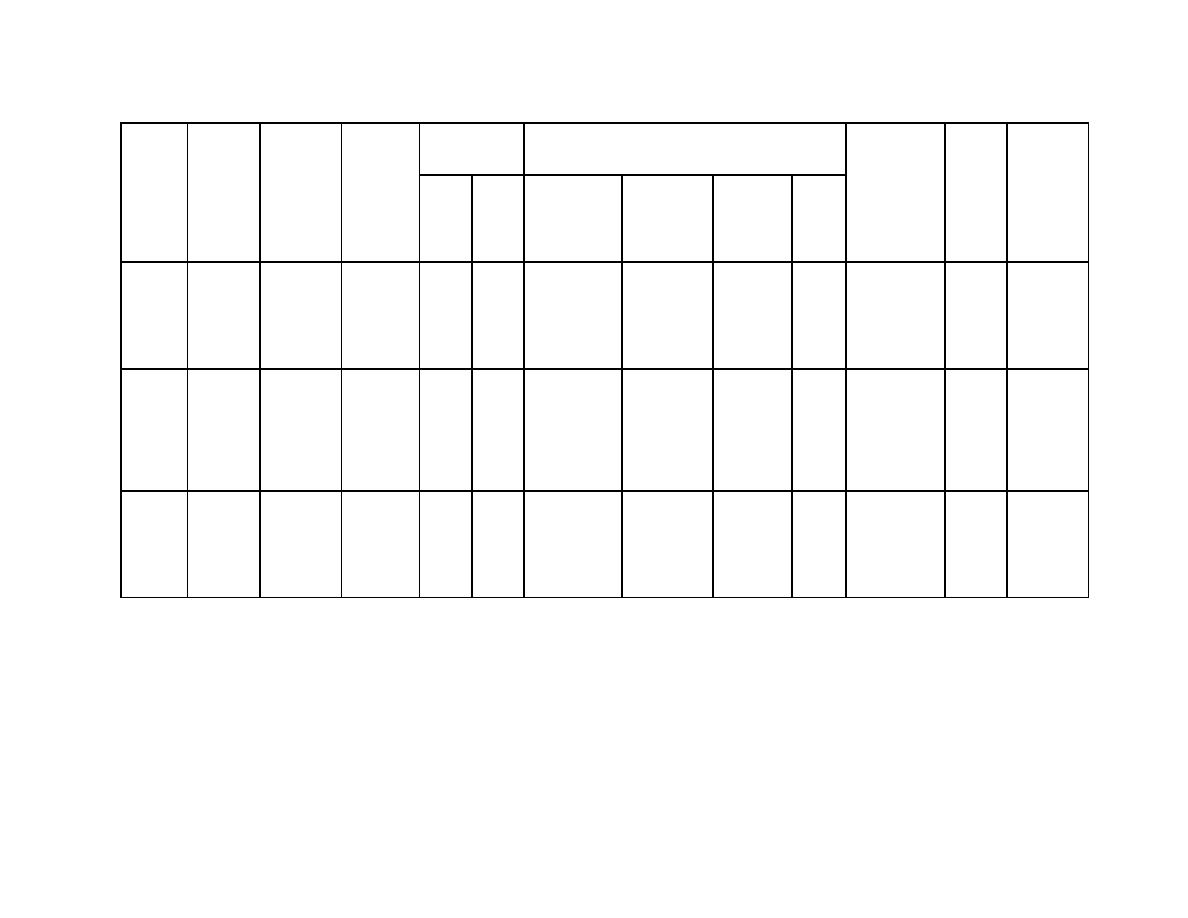
Table 8-1.4
Typical Properties of Compacted Soils
Group
Soil
Range of
Range of
Typical
Range of
Typical Strength Characteristics
Typical
Range
Symbol
Type
Maximum
Optimum
Value of
Subgrade
Coefficient
of
Dry Unit
Moisture,
Compression
Modulus
of
CBR
Weight,
Percent
k
Permeability
Values
At
At
Cohesion
Effective
Cohesion
Tan
gm/cm3
gm/cm3
cm/min
134
(Saturated)
345
Stress
(as
(lbs/ft3)
(lbs/ft3)
(ft/min)
kPa
kPa
kPa
Envelope
Compacted)
(lb/ft2 )
(1.4
(3.6
Deg
kPa
(lb/ft2 )
tsf)
tsf)
>1.5 x 10-5
MH
Inorga-
1.121 -
10 or
1,400
40-24
2.0
3.8
73 (1500)
20 (420)
25
0.47
nic clay
1.522
less
2,800
(>5 x 10-7)
silts/el-
(70-95)
(50-100)
astic silt
>3 x 10-6
CH
Inorga-
15 or
700
1.201
36-19
2.6
3.9
342 (7150)
11 (230)
19
0.35
(>10-7)
nic
less
3,500
1.682
clays of
(50-150)
(75-105)
high
plasti-
city
OH
Organic
1.041
45-21
***
***
*****
*****
****
****
****
5 or
350
& silty
1.602
less
2800 (25-
clays
(65-100)
100)
Notes:
1. All properties are for conditions of "Standard Proctor" maximum density, except volume of " k " and CBR which are for "Modified Proctor"
maximum density.
2. Typical strength characteristics are for effective envelopes and are obtained USBR data.
3. Compression values are for vertical loading with complete lateral containment.
4. (>) indicates that typical property I greater than the value shown. Asterisks (*) indicate insufficient data available for an estimate.



 Previous Page
Previous Page
